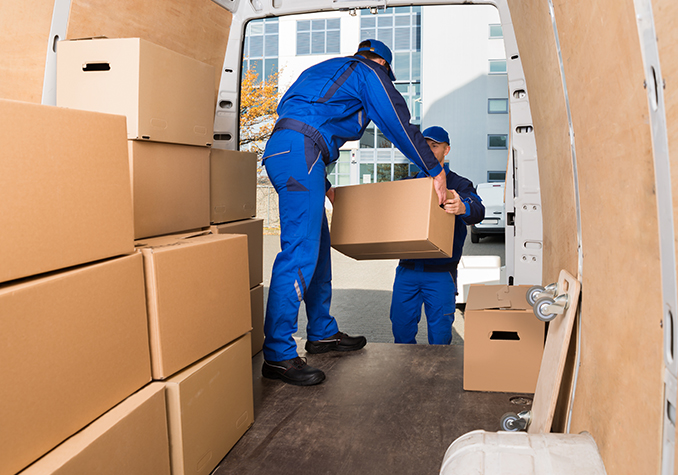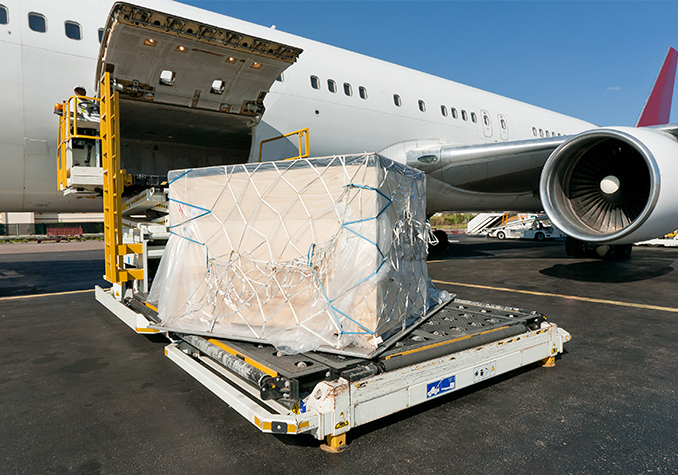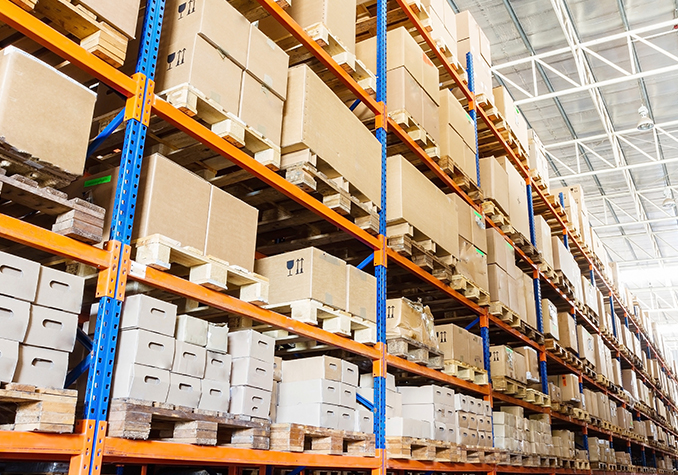Choosing the Right Packaging for Cargo to Pakistan | Detail Guidelines
Shipping cargo to Pakistan can be a complex process, especially when it comes to selecting the appropriate packaging. The journey of your goods involves various stages and potential challenges that demand careful consideration. From understanding the nature of your goods to complying with regulations and customs requirements, every step requires attention to detail. In this, we will explore the essential aspects of choosing the right packaging for your cargo to Pakistan, helping you ensure a safe and successful delivery.
The Cargo Puzzle: Understanding the Nature of Your Goods
Before diving into the packaging selection process, it is crucial to gain a comprehensive understanding of your cargo. The type of goods, their composition, and any special handling requirements play a vital role in determining the appropriate packaging solution. For instance, fragile items, perishable goods, or hazardous materials may require specific packaging considerations.
Unlocking the Enigma: Decoding the Size, Weight, and Fragility of Your Cargo
The size, weight, and fragility of your cargo are key factors that influence the choice of packaging. Larger, heavier items may require sturdier packaging materials and additional support to prevent damage during transit. Fragile goods necessitate protective measures such as cushioning and shock-absorbing materials to mitigate the risk of breakage.
A Delicate Dance: Handling Perishable Items with Care

When shipping perishable items to Pakistan, maintaining their freshness and quality is paramount. Packaging for perishable goods should include insulation materials, temperature control measures, and adequate ventilation to prevent spoilage. Understanding the specific handling requirements of different perishable items is essential to ensure their safe arrival.
Unveiling the Packaging Code: Researching Regulations and Customs Requirements
Complying with regulations and customs requirements is crucial to avoid delays and ensure smooth customs clearance. Familiarize yourself with the packaging regulations specific to Pakistan, such as restrictions on certain materials or the need for special labelling. Thorough research and understanding of these requirements will help you prepare the necessary documentation and packaging in advance.
Navigating the Labyrinth: Unravelling Pakistan’s Packaging Regulations
Pakistan has specific packaging regulations that must be adhered to for successful importation. These regulations may include guidelines for labelling, packaging materials, and safety considerations. Familiarize yourself with these regulations to ensure your packaging meets the necessary standards and avoid potential penalties or rejections.
Customs Chronicles: Documenting Your Cargo’s Journey
Accurate documentation is crucial for international shipping. Prepare comprehensive packing lists and commercial invoices that detail the contents, quantities, and values of your cargo. Ensure that all required information, such as item descriptions, HS codes, and country of origin, is included. Thorough documentation will expedite customs clearance processes and facilitate the smooth delivery of your goods.
Building Fortresses: Selecting Sturdy and Resilient Packaging Materials
Choosing the right packaging materials is essential to safeguard your cargo during transit. Sturdy and resilient materials offer protection against impact, compression, and environmental factors. Let’s explore some key options for reliable packaging:
The Armoury: Exploring the Strength of High-Quality Corrugated Cardboard

Corrugated cardboard is a popular choice for packaging due to its strength and versatility. It provides excellent cushioning, shock absorption, and stackability. By selecting high-quality corrugated cardboard boxes appropriate for your cargo, you can ensure the safe transportation of your goods.
Wrapping with Confidence: Embracing the Power of Shrink Wrap and Stretch Film
Shrink wrap and stretch film are valuable tools for securing and protecting your cargo. These materials offer stability, prevent shifting, and provide resistance against moisture, dust, and tampering. Use shrink wrap or stretch film to secure items on pallets or bundle smaller packages together, ensuring their integrity throughout the shipping process.
Size Symphony: Striking the Perfect Balance
The dimensions of your packaging play a significant role in efficient shipping. Finding the optimal size strikes a balance between minimizing wasted space and providing adequate protection. Consider the dimensions of your cargo, stacking capabilities, and any size limitations imposed by shipping carriers or customs regulations.
Battling the Elements: Conquering Climate and Environmental Factors
Pakistan’s diverse climate conditions require careful consideration when choosing packaging materials. Extreme temperatures, humidity, and exposure to moisture can adversely affect your cargo. Opt for moisture-resistant materials, such as plastic or laminated packaging, and consider using desiccant packs to absorb excess moisture during transit.
Weather Warriors: Adapting to Pakistan’s Diverse Climate Conditions
Pakistan experiences a wide range of climate conditions, from hot and arid regions to more humid areas. Ensure your packaging is designed to withstand the specific weather patterns of the intended destination. This may include using insulation materials, temperature-controlled packaging, or moisture-resistant coatings.
Guarding Against the Elements: Moisture-Resistant Materials and Desiccant Packs
Moisture can be a significant threat to your cargo’s integrity. Select packaging materials that are resistant to water and humidity, such as plastic, waterproof coatings, or laminated materials. Additionally, consider using desiccant packs inside the packaging to absorb any moisture that may enter during transit.
The Power of Identity: Labelling and Documentation Mastery

Proper labelling and documentation are crucial for the smooth handling and delivery of your cargo. Clear and accurate labelling ensures that your packages are easily identified and processed. It also helps customs officials and shipping carriers understand the nature of the goods and follow any specific instructions.
Signposts of Success: Clear and Accurate Labelling for Swift Delivery
Label each package clearly and legibly, including essential information such as recipient details, shipping address, and contact information. Use durable and waterproof labels to ensure they remain intact throughout the journey. Additionally, consider using labels with handling instructions, special markings for fragile items, or any other relevant information.
Paper Trails: Mastering Packing Lists and Commercial Invoices
Accurate and comprehensive packing lists and commercial invoices are vital for customs clearance and documentation purposes. Include detailed descriptions of each item, quantities, weights, and values. Ensure that the information matches the actual contents of the shipment and complies with any specific requirements outlined by customs authorities.
From Novice to Navigator: Seeking Professional Guidance
Navigating the complexities of shipping and packaging can be overwhelming, especially for those new to the process. Seeking guidance from experienced professionals, such as freight forwarders or shipping agents, can help streamline your shipping operations and ensure compliance with regulations. Their expertise can provide valuable insights and save you time, effort, and potential pitfalls.
The Expert’s Compass: Navigating the Seas of Shipping with Freight Forwarders
Freight forwarders act as intermediaries between shippers and carriers, coordinating the logistics of cargo transportation. They possess in-depth knowledge of shipping procedures, regulations, and customs requirements. Engaging a reputable freight forwarder can simplify the packaging process, ensuring your cargo meets all the necessary criteria for successful delivery to Pakistan.
Charting a Course to Success: The Benefits of Shipping Agents
Shipping agents specialize in managing and organizing the transportation of goods. They have established networks with carriers and possess extensive knowledge of shipping routes, costs, and documentation. Collaborating with a reliable shipping agent can provide you with valuable insights, negotiate favourable rates, and ensure your cargo reaches its destination safely.
A Tale of Triumph: Success Stories and Lessons Learned
Learning from the experiences of others can offer valuable insights and inspire effective packaging strategies. Success stories highlight best practices, innovative packaging solutions, and lessons learned from challenges faced. By studying these narratives, you can gain inspiration and adapt successful strategies to your specific cargo and shipping needs.
Inspiring Narratives: Real-Life Examples of Effective Packaging
Explore real-life examples where packaging played a pivotal role in successful cargo delivery. These stories may showcase innovative solutions, out-of-the-box thinking, or the importance of adhering to regulations and customs requirements. By studying these narratives, you can gain inspiration and apply the lessons learned to your packaging strategies.
Lessons in Resilience: Overcoming Challenges and Optimizing Packaging Strategies
Challenges are an inevitable part of the shipping process. By studying examples where packaging strategies overcame obstacles, you can learn how to address potential issues effectively. Identify common challenges, such as rough handling, long transit times, or extreme weather conditions, and adapt your packaging accordingly to enhance the resilience and durability of your cargo.
Beyond Borders: Applying Packaging Principles for International Shipping
While this blog has focused on cargo to Pakistan, the principles discussed apply to international shipping as a whole. As businesses expand globally, understanding how to choose the right packaging becomes increasingly important. Adapt the knowledge gained here to meet the unique requirements of different countries, considering their regulations, climate conditions, and cultural considerations.
Unlocking the World: Adapting Packaging for Global Destinations

As you expand your shipping operations to various global destinations, consider the specific requirements and regulations of each country. Adapt your packaging to meet local standards, climate conditions, and cultural considerations. By tailoring your packaging to each destination, you can ensure the safe and efficient delivery of your goods worldwide.
Embracing Diversity: Cultural Considerations in Packaging Design
Different cultures may have varying perceptions of packaging aesthetics, sustainability, or symbolism. When shipping to diverse destinations, consider adapting your packaging design to align with local preferences. This may include incorporating cultural symbols, using eco-friendly materials, or ensuring multilingual labels for improved understanding.













